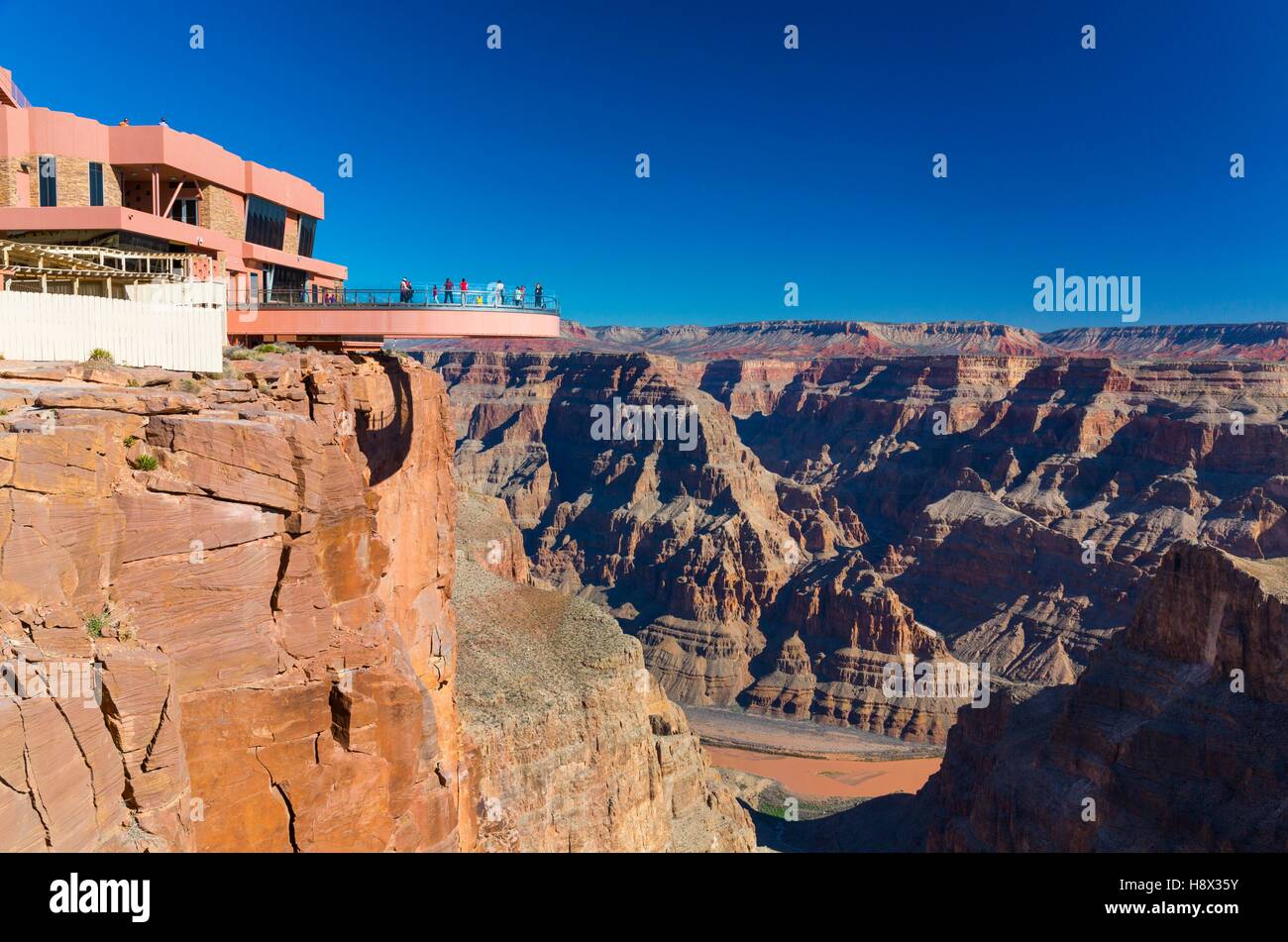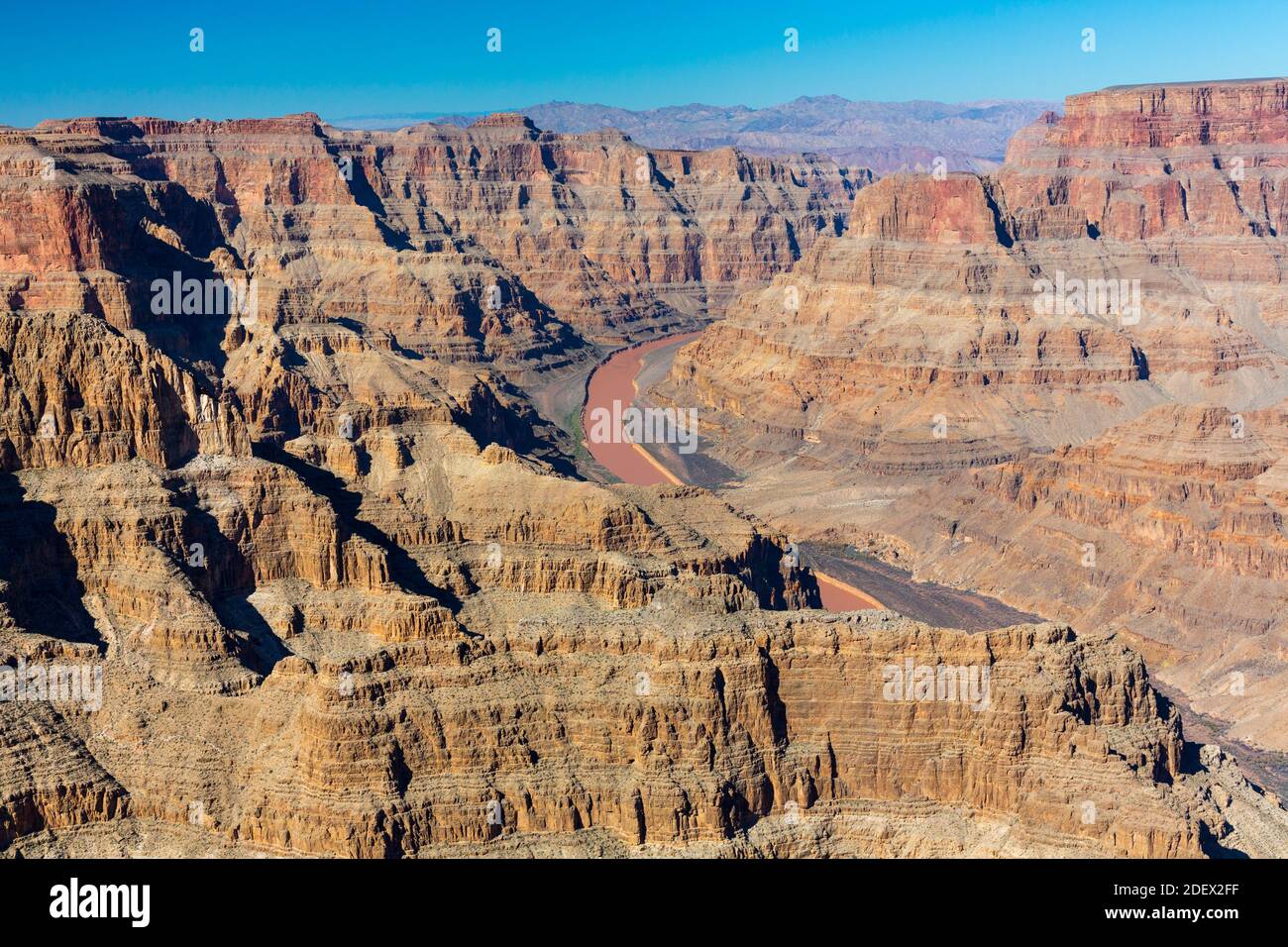
The Transparent Divide: Grand Canyon Skywalk, A Leap of Faith for the Hualapai Nation
Four thousand feet below, the Colorado River carves its ancient path, a ribbon of jade green against the rust-red tapestry of the Grand Canyon. Above it, suspended in the vast, silent expanse, is a shimmering arc of glass and steel – the Grand Canyon Skywalk. It’s a marvel of modern engineering, a thrilling, stomach-churning spectacle that offers unparalleled views into one of the world’s most iconic natural wonders. But beyond the transparent floor and the dizzying height, the Skywalk represents something far more profound: a bold, often controversial, leap of faith for the Hualapai Nation, a journey into economic self-determination forged on sacred ground.
Opened in March 2007, the Skywalk is a U-shaped cantilevered glass bridge that extends 70 feet out from the canyon rim, allowing visitors to walk a mere few inches above the abyss. It’s a structure designed to inspire awe and terror in equal measure. Made of more than 1.2 million pounds of steel and over 80,000 pounds of glass, it’s engineered to withstand the weight of 71 million pounds (equivalent to 71 Boeing 747s), winds up to 100 miles per hour, and an 8.0 magnitude earthquake within 50 miles. Yet, for many who step onto its pristine surface, it’s the sheer, unadulterated emptiness below that truly takes their breath away, making them question every instinct that screams, "Don’t look down!"
For millennia, this rugged, awe-inspiring landscape has been home to the Hualapai people, "People of the Tall Pines," whose ancestral lands stretch across a million acres along the Grand Canyon’s western rim. Their connection to the canyon is not merely geographical; it is spiritual, cultural, and existential. It is a place of stories, ceremonies, and sustenance. For generations, however, the Hualapai, like many Native American tribes, faced the harsh realities of poverty, high unemployment, and limited opportunities, living on land rich in beauty but lacking in resources that could easily be monetized.
The genesis of the Skywalk was not without its tumultuous currents. The idea, initially conceived by Las Vegas businessman David Jin, promised a dramatic solution to the tribe’s economic woes. But the proposal ignited a fierce debate within the Hualapai Nation. Some elders and tribal members viewed the project as a desecration of sacred land, a commercialization of their spiritual home that risked offending the ancestors and disrupting the delicate balance of their natural world. "This land is our church, our history book," explained one elder during the initial discussions. "To put a glass bridge over it, to invite thousands of strangers to walk where only our spirits should tread, felt like a betrayal."
However, others, particularly younger generations and tribal leaders, saw the Skywalk as a necessary evil, or perhaps, a divine opportunity. They argued that self-determination required economic independence, and that the only way to fund essential services – schools, healthcare, infrastructure – was to leverage the one asset they possessed in abundance: the unparalleled beauty of their ancestral lands. "We were tired of relying on government handouts," explained Charlie Vaughn, a former tribal council member. "We wanted to build our own future, on our own terms. The Skywalk was a chance to bring jobs, hope, and dignity back to our people."

The decision to proceed was ultimately a testament to the Hualapai’s sovereignty and their right to determine their own destiny. They voted to move forward, investing approximately $30 million into the project, largely through a loan backed by Jin. The Skywalk officially opened on March 20, 2007, and immediately captured global attention.
The economic impact on the Hualapai Nation has been transformative. Prior to the Skywalk, unemployment on the reservation hovered around 50%. Today, the tribe employs hundreds of its members in various capacities related to tourism, from bus drivers and tour guides to hospitality staff and cultural performers. The revenue generated has funded crucial programs, including a new high school, improved healthcare facilities, housing initiatives, and scholarships for tribal youth. "Before the Skywalk, our young people had to leave the reservation to find work," says Waylon Honga, a Hualapai tribal member and Skywalk employee. "Now, they can stay home, work on their own land, and be part of building our future. That’s invaluable."
Beyond the Skywalk itself, the Hualapai have developed a comprehensive tourism experience at Grand Canyon West. Visitors arriving by shuttle from the entrance gate embark on a journey that includes several key points of interest. The first is Eagle Point, home to the Skywalk and a replica Native American village where Hualapai members share traditional dances and crafts, offering a glimpse into their rich cultural heritage. Here, visitors can also see "Eagle Rock," a natural rock formation that strikingly resembles an eagle with outstretched wings, a sacred site for the Hualapai.
Further along is Guano Point, a breathtaking overlook offering 360-degree panoramic views of the canyon. Named for a guano mine that operated there in the 1950s, it’s now a popular spot for photography and home to the "Highpoint Hike," a rugged trail leading to a discarded tramway structure that once transported guano across the canyon. The Hualapai Market at Guano Point offers authentic Native American jewelry and crafts, further supporting tribal artisans.
The journey to Grand Canyon West is itself an experience, traversing rugged desert landscapes and offering glimpses of the vast, unspoiled reservation. Unlike the more developed South Rim, the West Rim deliberately retains a more rustic, less commercialized feel, aiming to preserve the natural beauty and the sense of being on Native American land. Visitors are encouraged to engage with the Hualapai culture, to understand that they are guests on sovereign territory.
However, the Skywalk’s journey hasn’t been without its continued challenges. Legal battles with David Jin over financial agreements and management control cast a shadow for several years, highlighting the complexities of such large-scale ventures. Environmental concerns, though addressed through extensive impact studies, remain a sensitive topic for some. The constant balancing act between commercial success and the preservation of cultural sanctity is an ongoing conversation for the Hualapai leadership.
To mitigate concerns about cultural integrity, the Hualapai have ensured that the tourism experience includes educational components. Signs throughout Grand Canyon West emphasize the tribe’s history and connection to the land. Cultural performances are presented with dignity and explanation, rather than mere spectacle. The tribe’s aim is not just to attract tourists, but to educate them, to share their story, and to foster respect for their heritage.
In the end, the Grand Canyon Skywalk stands as a potent symbol. It is a testament to human ingenuity and the enduring allure of one of Earth’s greatest natural wonders. More importantly, it is a monument to the resilience, adaptability, and unwavering spirit of the Hualapai Nation. It represents their determination to carve out a future defined by their own choices, to bridge the divide between ancient traditions and modern necessities, and to invite the world to walk, however briefly, on a transparent path above their sacred home, witnessing both the majesty of the canyon and the strength of its people. It is a leap of faith that continues to pay dividends, one dizzying step at a time.


